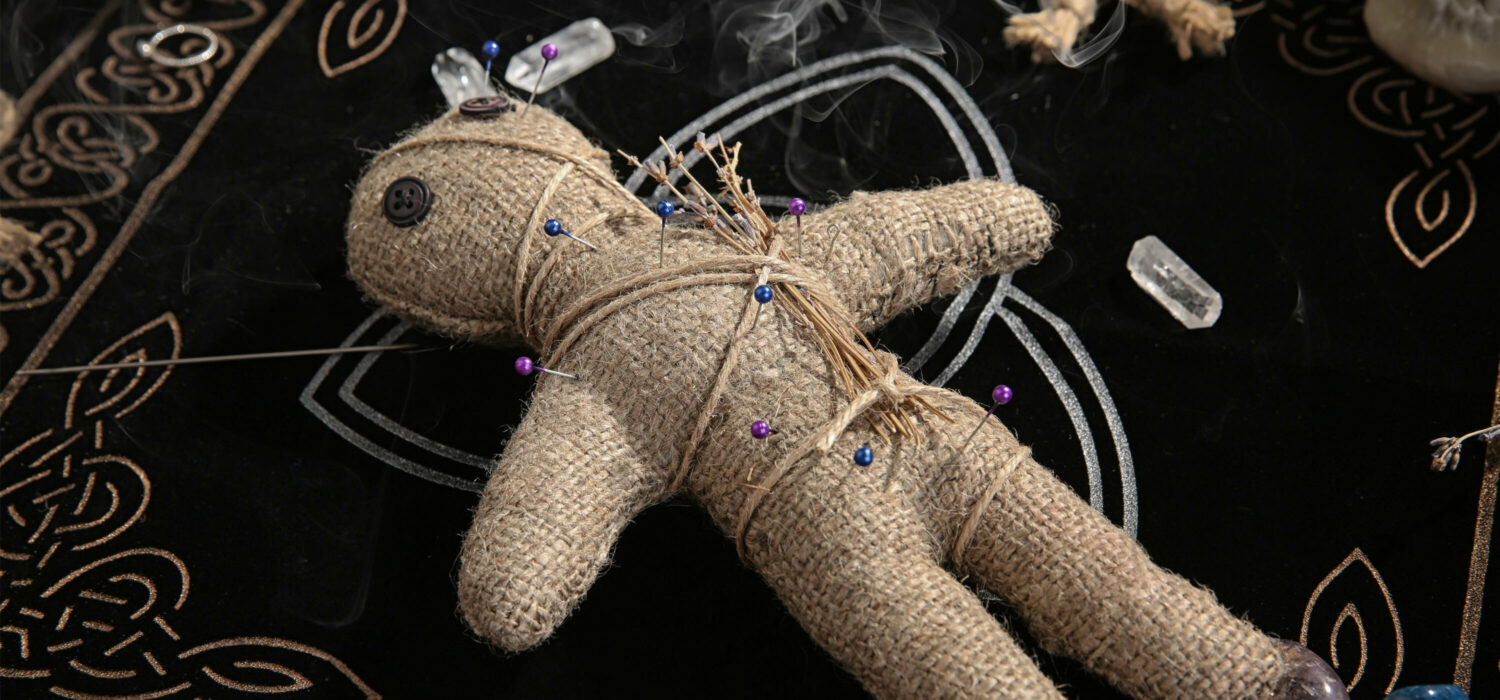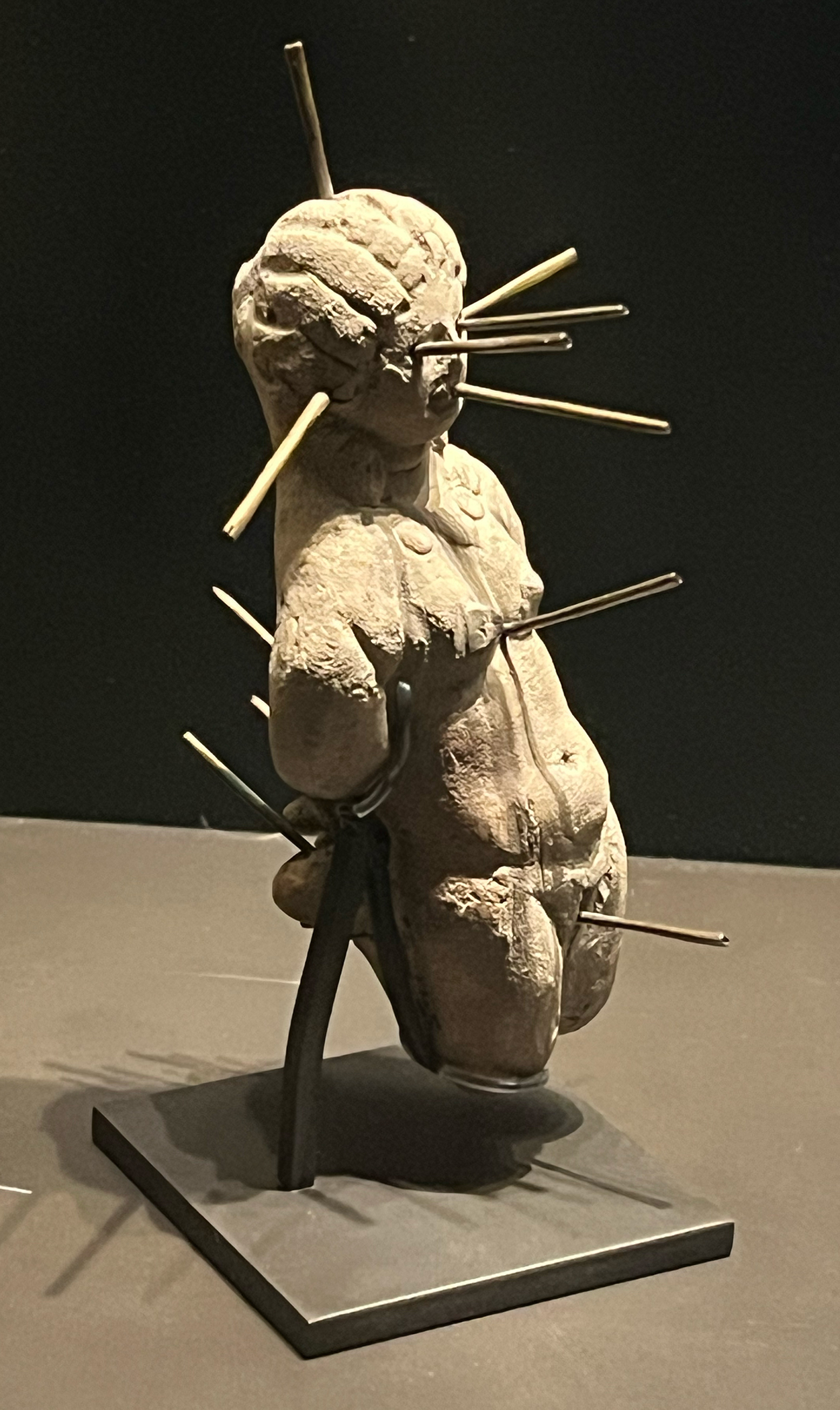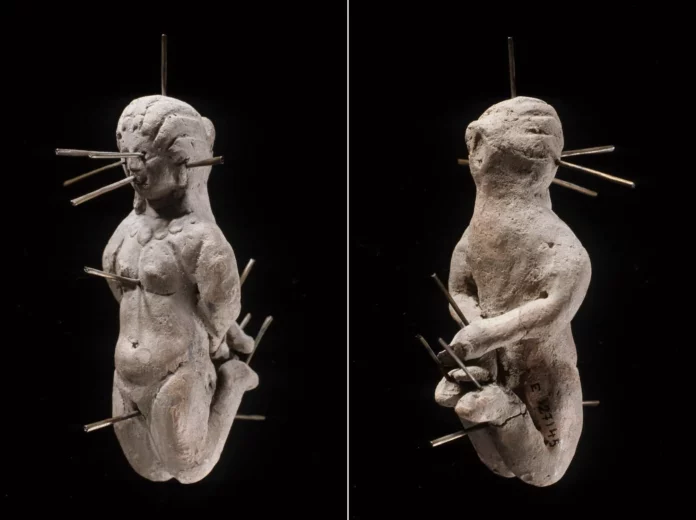For centuries, Voodoo dolls have been associated with curses and black magic in popular culture. However, the true purpose of these mysterious objects, known as “dolls Voodoo,” is far more ancient and rooted in magical and religious traditions practiced by the Greeks and Egyptians thousands of years ago. This article delves into the history of Voodoo dolls, exploring their original purpose as amulets and shedding light on their use in ancient civilizations.
Amulets and the True Purpose of Voodoo Dolls

Contrary to popular belief, Voodoo dolls were not created to harm others through piercing with sharp objects. In ancient times, these dolls served as amulets, believed to embody spirits or deities that would bring love, wealth, or other blessings to their owners. The act of infusing the doll with a spirit or deity allowed the owner to influence its actions through the use of a needle. However, it is important to note that the modern use of Voodoo dolls in Louisiana Voodoo has deviated from these traditional practices.
Ancient Greek and Egyptian Ritual Dolls
The ancient Greeks referred to similar ritual dolls as “colossus” or “kolossoi.” These dolls gained popularity in the Roman Empire and Egypt between the 5th and 2nd centuries BC. Archaeological discoveries in Upper Egypt have revealed the prevalence of such figurines, which shared common characteristics. These included intertwined limbs, piercing with nails or pins, forward-facing heads or limbs, confinement in containers or coffins, engravings of the victim’s or deity’s name, and burial in graves or chapels.
One Prominent Example: The Egyptian “Voodoo Doll”

One of the most famous examples of an ancient “Voodoo doll” is a clay figurine discovered near Thebes and currently housed in the Louvre Museum in Paris. This figurine, dating back to the 3rd or 4th century BC, is kneeling with its limbs tied behind its back and pierced with 13 needles. Despite its alarming appearance, the accompanying inscription on a lead tablet reveals that it was used for a love spell. The inscription, written in Greek, requested the love and obedience of Ayas, the daughter of Gorigen, for the person who cast the spell.
Neutralizing Curses and Spells

Ancient texts indicate that curses and spells cast with Voodoo dolls could be neutralized. An account by Sophronius of Jerusalem in the 6th century AD recounts how Theophilus of Alexandria was paralyzed by a spell cast upon him by enemies. In a dream, Theophilus discovered that a Voodoo doll depicting himself was being used against him. With the help of a fisherman, the doll was retrieved from the sea, and upon removing the nails from its limbs, Theophilus was immediately cured.
The origin of Voodoo dolls dates back to ancient Greek and Egyptian civilizations, where they were used as amulets and conduits for blessings rather than curses. The practice of infusing these dolls with spirits or deities allowed individuals to influence their actions. The example of the Egyptian “Voodoo doll” reveals that these figurines were used for love spells in ancient times. While modern interpretations of Voodoo dolls may focus on their negative connotations, it is essential to recognize the rich history and diverse purposes they served in ancient magical practices. The journey into the origins of Voodoo dolls highlights the complexities and nuances of ancient beliefs and rituals.
